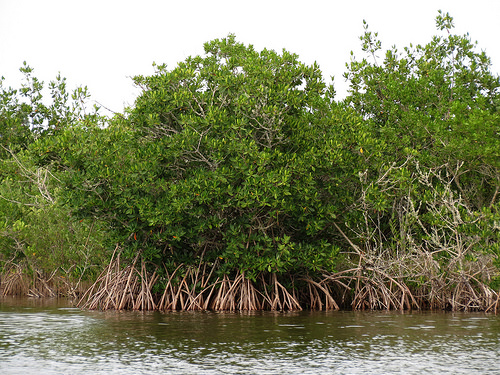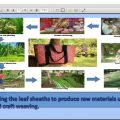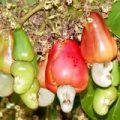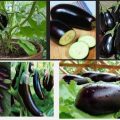The Ecosystems Research and Development Bureau (ERDB) has pressed companies and organized groups to tie up with ERADB on pest management-driven mangrove farming amid unsustainable mangrove planting craze since Yolanda wreaked havoc in the country in 2013.

In the wake of Typhoon Yolanda, Filipinos learned an important lesson – the important role mangroves play in the environment and of protecting these. While mangroves are an abundant source of food and fuel, these also provide a very important role of saving coastal communities against storm and storm surges by acting as a coastal barrier.
Today, more individuals and organizations are engaging not only on tree planting but also on mangrove planting. However, ERDB, research arm of the Department of Environment and Natural Resources (DENR), calls for the public’s participation in the sustainable way of planting mangroves.
According to ERDB Director Dr. Henry A. Adornado, ERDB is encouraging companies, people’s organizations, non government organizations, and local government units to partner with the government in enhancing the sustainability of mangrove plantations through Integrated Pest Management (IPM).
“The bureau highlights its efforts of communicating the importance and know-how of practicing IPM to ensure the survival of mangroves planted in the Philippines,” said Adornado.
The IPM principle involves the use of science-based techniques that will ensure that all seedlings planted will survive and grow, he added.
Ms. Cynthia C. Marquez, ERDB’s Senior Science Research Specialist on forest tree insect pest and diseases, explained there are basic prerequisites for a sustainable mangrove planting which starts with the selection of quality planting materials.
Another ERDB researcher, Ms. Marcelina V. Pacho mentioned that though there are numerous ways to control pest infestation, the importance of preventing infestation lies in the proper mangrove planting.
“Before undertaking any mangrove planting, it is important to gather baseline information on the area to be planted,” she said. DENR has already released DMC 2014-06 which provides information on baselining protocols. Director Adornado shared that for 2016, ERDB is expecting to make the baseline information available and accessible to the public.
First, before planting, farmers should choose the right species of mangroves. They should select the species that suits the area where it will be planted. Filipinos are very lucky that among the 70 species of mangroves in the world, 46 of these can be found in the country.
Bakawan babae and Bakawan lalaki are usually preferred by most farmers because it germinates easily But ERDB warns that these species are also more vulnerable to infestation like barnacles. Barnacles are crustaceans which are being considered as the most destructive pests of mangroves. Barnacles, when in groups, could crown mangrove stems, causing growth stunting and even deaths of mangroves.
There are specific species of mangroves that can be recommended for planting depending on soil type and salinity of water.
Example, for mangrove planting in the seaward, Bungalon, Pagatpat, Bakawan bato, and Bakawan lalaki are recommended. For the middle part of the mangrove area, Bungalon, Apiapi and Bakawan babae are preferred than other species. At the landward portion where the soil is silty to silty clay, species like Tangal and Nipa are preferred.
As part of the DENR’s Mangrove and Beach Forest Development Project for 2015, ERDB has conducted baseline survey in ten regions (Regions 4a, 4b, 5, 6,7,8,9,10,11 and 13) to gather information on the present conditions of the sites including the flora and fauna, soil and water properties, and socioeconomic information.
Likewise, farmers should ensure proper transplanting of mangrove propagules (planting material. Viability of mangrove seeds and propagules is one of the most important considerations in mangrove planting. The timing of seed collection and the manner of gathering the wildings are very important. For example, Bakawan lalaki seeds are available from October to December while Bakawan babae can be collected from May to June. Even the packaging and transport of the propagules are very crucial in ensuring the survival of the mangroves. Propagules must be collected from places with similar climatic and edaphic (soil) conditions compared to the planting sites.
Then, farmers should maintain and monitor the planted areas. Mangrove planting does not end after the mangrove seedlings have been planted. While there have been no reports of pest outbreak in mangrove areas, ERDB prescribes regular pest monitoring to regularly check for presence of any insect pest and diseases.
Common pests associated to mangroves include barnacles, oysters, borers and beetles. To control pest outbreaks, ERDB recommends the use of environment-friendly techniques such as the introduction of natural enemies like wasps or use of mechanical devices in removing barnacles. If the mangroves planted will grow and survive for years, ERDB assures that our coastlines will have a strong defense against the destructive effects of severe typhoons, tsunamis and sea level rise. Adreana Santos-Remo
###
BACKGROUNDER
Mangroves have been recognized to play an important role in combatting storm surges which were observed to be severely destructive during the Yolanda typhoon.
It is estimated that mangroves have a benefit value of up to $585 per hectare per year as source of raw materials and food; up to $10,821 per hectare in coastal protection; and $3,879 per hectare per year in erosion control benefit.
Its other benefits, according to EB Barbier (et. al.), are maintenance of fisheries, $708-$987 per hectare; carbon sequestration, $30-$50 per hectare per year; and water purification, tourism, recreation, education, and research although these have not been quantified in dollar terms.
Suitable mangrove species
In its IPM work, ERDB has recommendations on the use of specific mangrove species for particular sites. The mangrove species Bakawan babae and lalaki are not always the best species to plant despite farmers’ preference to use these just because these easily germinate even while yet attached to parent trees. Bakawan babae and Bakawan lalaki are vulnerable to infestation of the pest barnacles.
There are specific species recommended for planting depending on soil substrate or type — whether sandy loam or mud plots. Among the more pest resistant species are Bungalon, Pagatpat.
ERDB also encourages planting of different species of mangroves for reforestation. Monoculture practice exposes an area to heavy infestation.
Barnacles
Among the most destructive mangrove pests are crustaceans called barnacles. Like oysters, barnacles come in groups that crowd mangrove seedling stems, causing seedling stunting and death.
Barnacles are managed through the planting of seeds on higher ground, among others.
Barnacle infestation is severe in more saline water and in inundated areas as barnacles feed on planktons available in water.
Siniloan, Laguna baselining
Baselining work on reforestation was pilot tested by ERDB in a multi-sectoral project in Siniloan, Laguna to ensure that the 350-hectare reforestation is sustained to benefit the community.
“Baselining- benchmarking activity is necessary to assess the existing condition prior to NGP implementation,” according to the DENR circular.
The policy indicated ERDB’s role in assisting CENRO and PENRO (city and provincial environment and natural resources office). ERDB was tasked to provide a manual guide for the baselining work and to aid in monitoring field implementation of DENR projects.
Baselining involves recording of observed data in a specific area prior to reforestation or any activity. It will be useful in the implementation of a program and in monitoring accomplishments and problems in this program.
Accomplished in baselining is recording of data in an area on existing biological diversity (trees, insects, arthropods); social condition in the site (including effect of a program to people, whether it involves health or livelihood); and site’s physical description including soil cover, geology, nutrient cycling features, and hydrology (kind of water in the area which is important to plant survival—whether it has water source).
ERDB recommendations
ERDB mangrove experts have various recommendations to communities interested in mangrove reforestation.
· The timing of collection of seeds from the wild for germination in nurseries contributes to whether a mangrove seedling turns out to be healthy. Seed collection has been observed to be excellent during the wet season.
· Proper spacing in planting mangrove seedlings is important. Factors being considered include proper nutrient distribution to seedlings based on spacing. Closer spacing may limit nutrient provision for plants or may also give way to faster pest infestation.
· Site species matching of mangrove plants according to the zonation pattern of the area where it will be planted.
· Planting of mangroves in areas exposed during low tide or neap tide or near the edge of a river. Areas exposed to strong winds and with presence of seagrasses and barnacles should be avoided.
· Biological control or the distribution of natural enemies in mangrove site to control pests.
· Cluster planting of at least ten seedlings in order to protect the mangroves from strong winds and tidal waves.
For questions and interview requests, please contact Ms. Maricar Bou, 0910-706-1782, 0999-573-7077, 0917-671-1596






